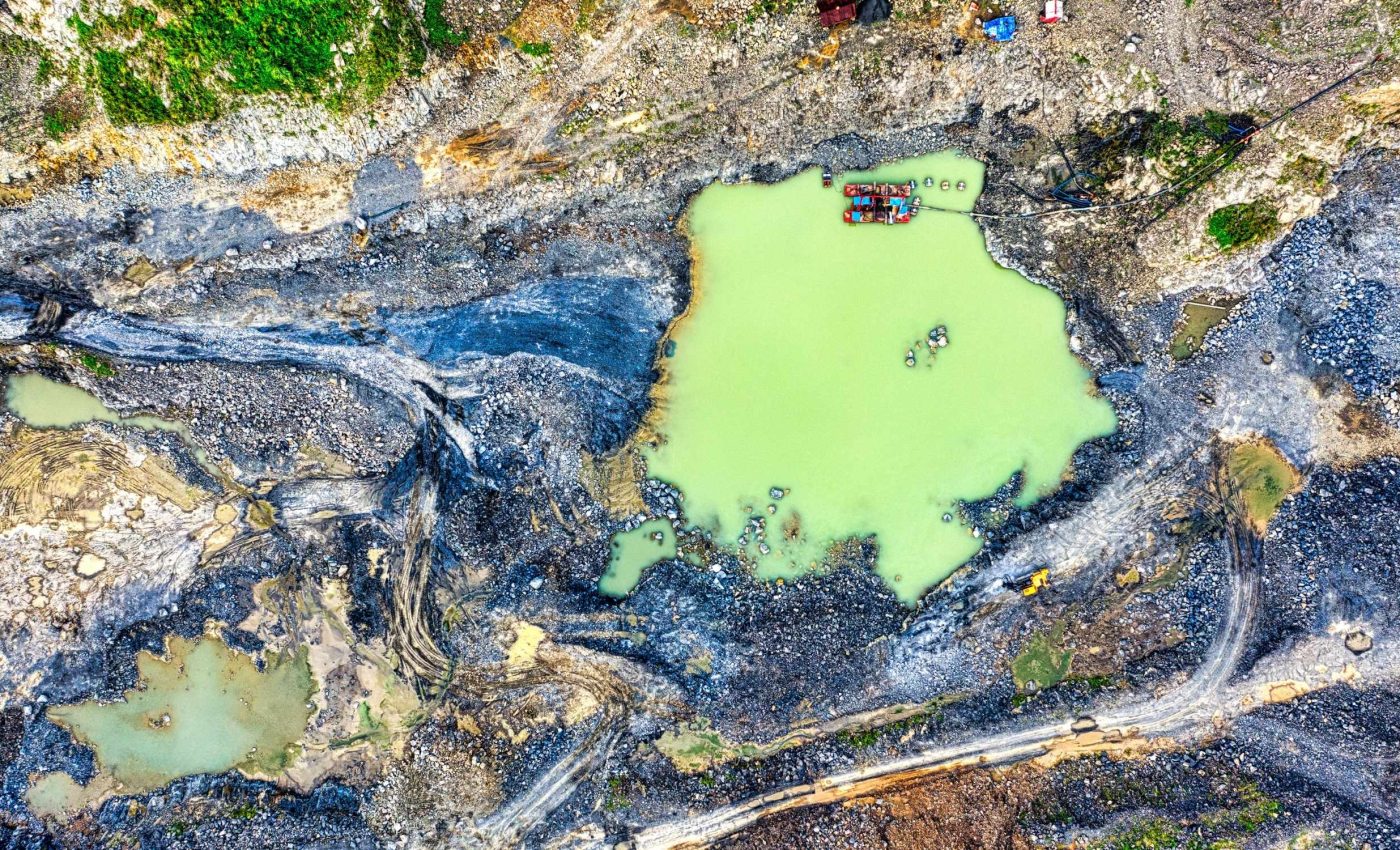
Study warns about the interaction between nitrate and uranium in U.S. drinking water
Across the Midwest, many towns pull their drinking water from underground layers of sand and silt. Those hidden reserves, called aquifers, carry the imprint of what we put on the land above them.
New lab work puts a sharp focus on how nitrate from fertilizer and animal waste can influence naturally occurring uranium in those aquifers. The research asks a simple question with serious stakes for water safety.
Nitrate, uranium, and groundwater
The investigation was led by Karrie Weber, an associate professor at the University of Nebraska–Lincoln (UNL), who specializes in groundwater microbiology and geochemistry.
Her team examined how the High Plains Aquifer, which supplies water to much of the central United States, responds when nitrate enters natural uranium-bearing sediments.
“Most Nebraskans do rely on groundwater as drinking water. So when you have high concentrations (of uranium), that becomes a potential concern,” said Weber, emphasizing the stakes for local residents who rely on well water.
What the experiment showed
Researchers collected intact cores about 2 inches wide and 60-feet-long from an aquifer site near Alda, Nebraska.
They protected the samples from oxygen and temperature changes to keep the natural conditions intact.
In the lab, they pumped simulated groundwater through columns of the silt at realistic flow rates. Some water carried added nitrate, some did not, and some included a chemical that slows microbial activity.
When the water included nitrate and no inhibitor, it carried away about 85 percent of the uranium present in the sediments.
Without nitrate, about 55 percent moved, and with nitrate plus the inhibitor, about 60 percent moved. The pattern points to biology and chemistry working together.
Microbes matter because they transform nitrate, and that transformation drives a reaction that changes uranium into a dissolved form that can travel with groundwater.
Why nitrate in water matters
Nitrate is common in farm country because it helps crops grow and also comes from manure and septic systems.
The legal limit for nitrate in public drinking water is 10 milligrams per liter, according to federal regulations.
Uranium at high levels is a kidney toxicant when consumed over time. The federal regulation sets a maximum contaminant level of 30 micrograms per liter for uranium in drinking water.
Field work over the past decade has hinted that nitrate and uranium tend to appear together in parts of the High Plains.
A survey from the USGS documented that uranium hot spots often track with nitrate, especially in shallow groundwater that lies closer to farmed soils.
The data showed that wells with higher nitrate were far more likely to exceed the federal uranium limit, even in areas untouched by mining or industrial waste.
This finding shifted attention toward farming-related nitrate as a key factor influencing uranium mobility in natural aquifers.
Microbes play a role
The column experiments support a clear pathway. Native microbes use nitrate and convert some of it to nitrite, a reactive intermediate that can alter nearby uranium minerals.
That reaction is oxidation, which changes the electron state of uranium and makes it easier to dissolve. Once dissolved, uranium becomes part of the water moving through sand and silt.
DNA evidence from the sediments showed organisms that can metabolize nitrate to nitrite. That microbial step helps explain why the inhibitor reduced uranium movement when it was present.
The work also shows that this pathway can operate in natural sediments, not only in places with industrial contamination. That detail matters for regions where agriculture is the main source of nitrate.
Where the risk concentrates
Not every well will face the same risk, and geology still sets the stage. Areas with more natural uranium in the sediments have a larger potential for release if nitrate shows up at high levels.
Shallow wells can be more exposed to land surface activities. In parts of the High Plains Aquifer, uranium and nitrate have been found together in shallower zones, a pattern consistent with the USGS findings in the regional assessment referenced earlier.
Communities that already work to control nitrate are not starting from zero. The same steps that bring nitrate down can also limit the chance of mobilizing uranium from sediments.
Nitrate, water, and human health
Local testing is the practical first step. The Environmental Protection Agency’s groundwater indicator summarizes national patterns for nitrate and explains how concentrations relate to human activity and health limits.
They include the 10 milligrams per liter threshold for estimated nitrate in groundwater used for drinking.
If results show nitrate drifting toward the limit, utilities can adjust fertilizer timing, improve manure handling, and protect wellheads.
Private well owners can consider certified treatment and retesting after big rain events that flush nutrients through the soil.
The study highlights that uranium risk can ride along with nitrate under the right conditions. Watching nitrate closely helps manage both concerns at once.
“Nitrate isn’t always a bad thing, but the important thing is not to have too much,” said Weber.
She explained that moderate nitrate levels can be harmless, yet once they are near the federal limit, the balance shifts and uranium becomes more likely to move into groundwater.
The study is published in Environmental Science & Technology.
—–
Like what you read? Subscribe to our newsletter for engaging articles, exclusive content, and the latest updates.
Check us out on EarthSnap, a free app brought to you by Eric Ralls and Earth.com.
—–













